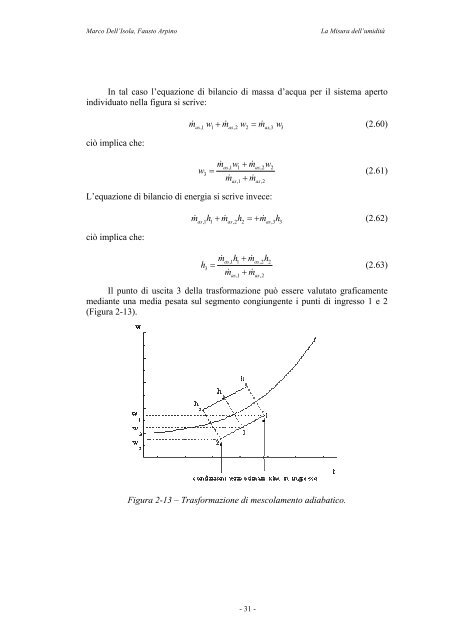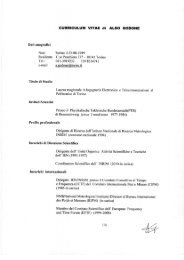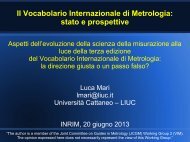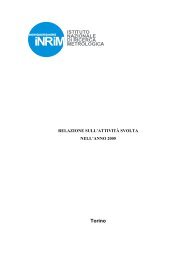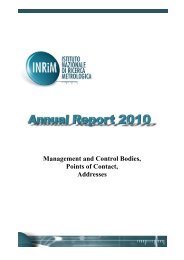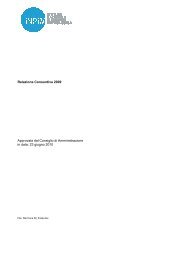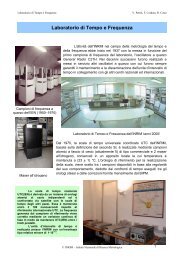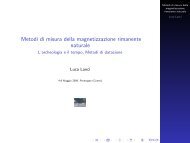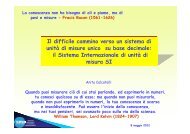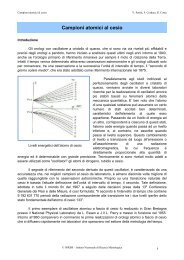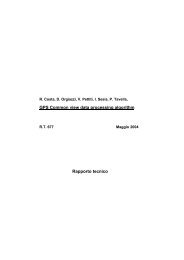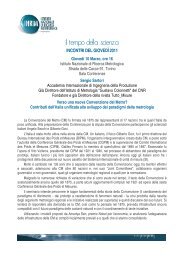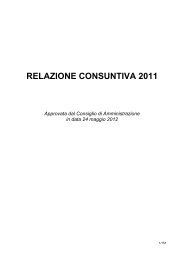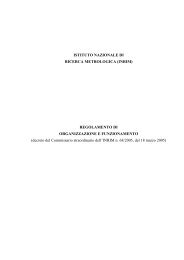2. PROPRIETÀ E TRASFORMAZIONI DELL'ARIA UMIDA - INRiM
2. PROPRIETÀ E TRASFORMAZIONI DELL'ARIA UMIDA - INRiM
2. PROPRIETÀ E TRASFORMAZIONI DELL'ARIA UMIDA - INRiM
You also want an ePaper? Increase the reach of your titles
YUMPU automatically turns print PDFs into web optimized ePapers that Google loves.
Marco Dell’Isola, Fausto Arpino La Misura dell’umidità<br />
In tal caso l’equazione di bilancio di massa d’acqua per il sistema aperto<br />
individuato nella figura si scrive:<br />
ciò implica che:<br />
m� w + m� w = m� w<br />
(<strong>2.</strong>60)<br />
as,1 1 as,2 2 as,3<br />
3<br />
m� w + m� w<br />
w3<br />
=<br />
m� + m�<br />
as,1 1 as,2<br />
2<br />
as,1 as,2<br />
L’equazione di bilancio di energia si scrive invece:<br />
ciò implica che:<br />
as,1 1 as,2 2 as,3<br />
3<br />
- 31 -<br />
(<strong>2.</strong>61)<br />
m� h + m� h =+ m� h<br />
(<strong>2.</strong>62)<br />
m� h + m� h<br />
h3<br />
=<br />
m� + m�<br />
as,1 1 as,2<br />
2<br />
as,1 as,2<br />
(<strong>2.</strong>63)<br />
Il punto di uscita 3 della trasformazione può essere valutato graficamente<br />
mediante una media pesata sul segmento congiungente i punti di ingresso 1 e 2<br />
(Figura 2-13).<br />
Figura 2-13 – Trasformazione di mescolamento adiabatico.


